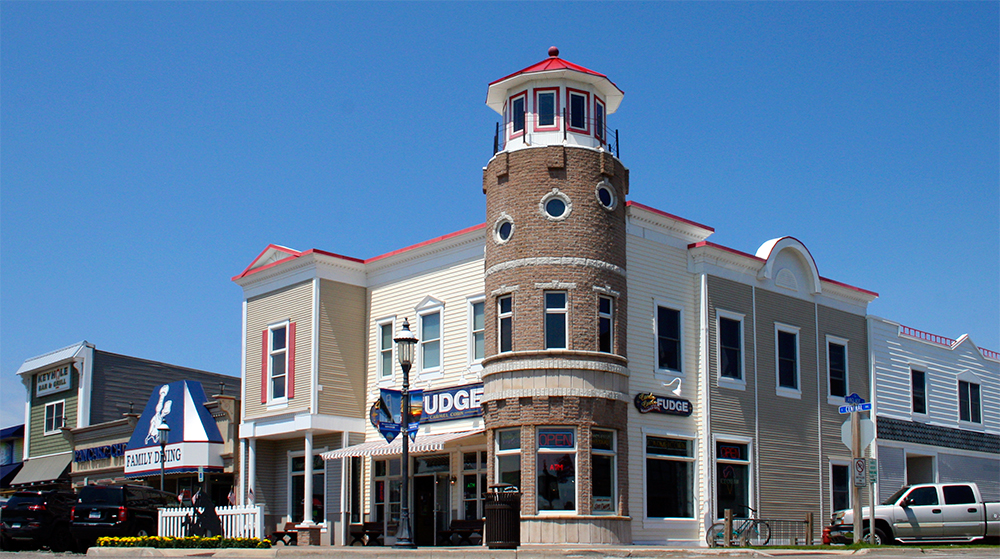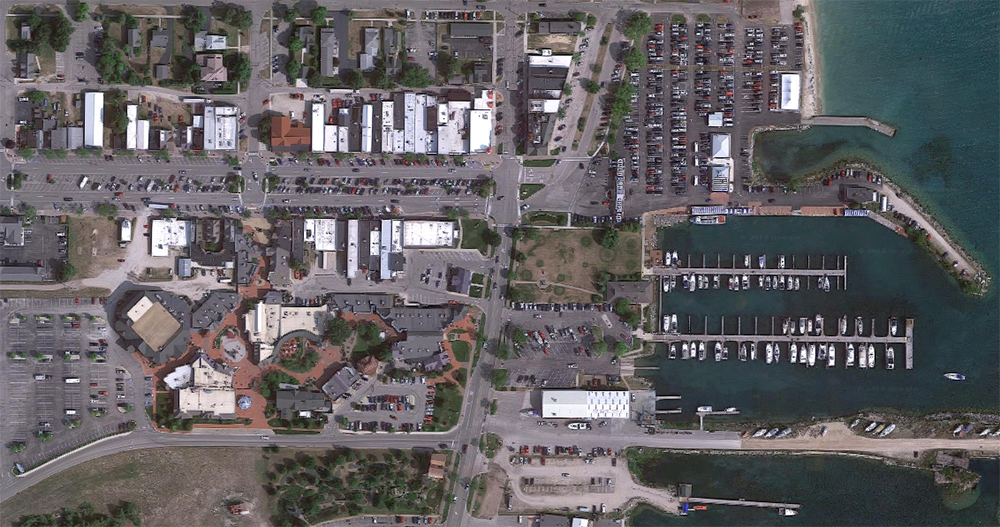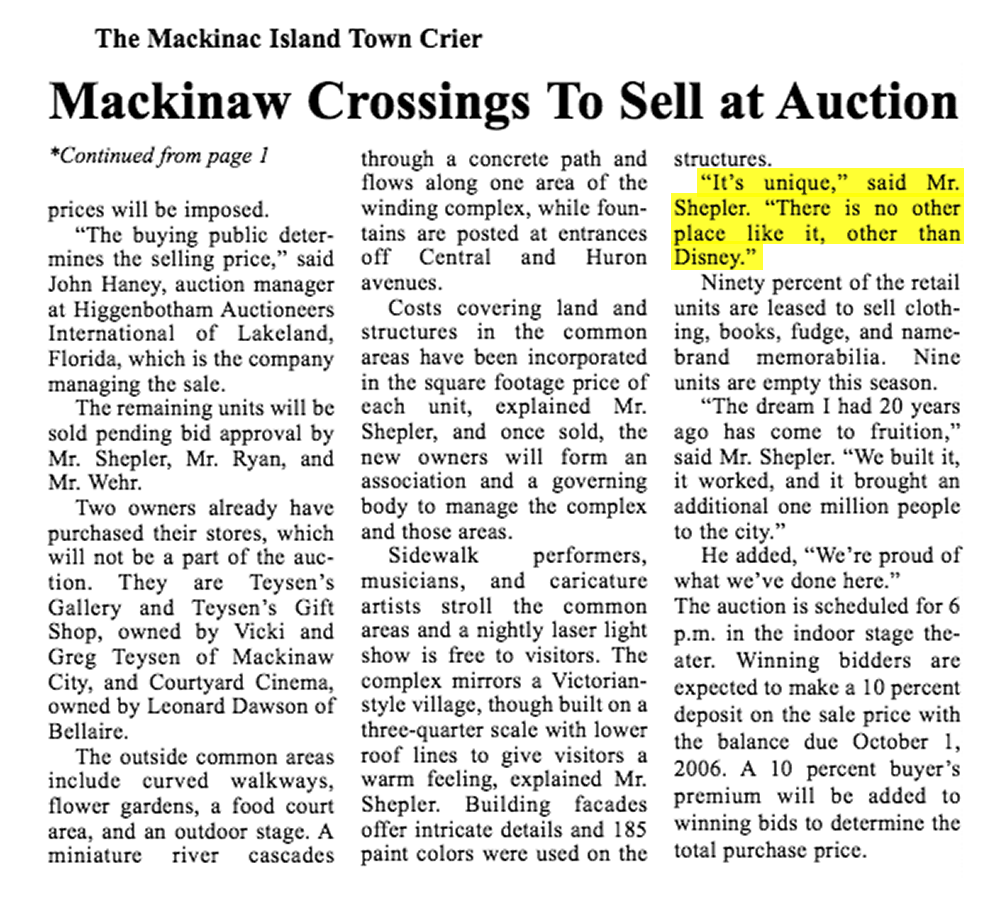It's Beginning to Look a Lot Like Bronner's.
Before leaving Frankenmuth, there was one last stop to make (again, at the insistence of fellow traveller David Janssen, Jr.). Bronner's CHRISTmas Wonderland advertises itself as the “World's Largest Christmas Store” and it’s certainly big—a sprawling complex of landscaped grounds covering some 27 acres.
Wally Bronner had an earlier career designing window displays in which he met vendors that needed custom Christmas decorations. He founded Bronner’s in 1954 with his wife Irene, and the first location was in downtown Frankenmuth on Main Street. The store expanded in 1966 and again in 1971, as additional buildings were procured nearby the intersection of the original downtown location. Six years later, the entire business moved just south of town to 45 acres of former farmland. It has grown at that location ever since. The actual address? 25 Christmas Lane.
Vintage postcard of Santa’s Village, Lake Arrowhead, California.
When I was growing up in Southern California, we often visited Santa’s Village at Lake Arrowhead in the San Bernardino Mountains come Christmas time. Opening a couple months before Disneyland in 1955, the park was franchised by its founder Glenn Holland; two other locations, one near Santa Cruz, California and the other in Illinois (which ended up a failure that sunk the company). By the late 90s, Santa’s Village was ailing and had to close. After years of dormancy and disrepair, it reopened in 2016 as an outdoor adventure area called SkyPark at Santa's Village. Many of the original structures from the 1950s have been restored.
Vintage Postcard of The Village, Lake Arrowhead, California.
Appropriately enough, given my discussion of Frankenmuth, Lake Arrowhead has carried an “Alpine Village” theme since the 1940s.
Vintage postcard of Santa’s Village, Jefferson, New Hampshire.
The “Santa’s Village” model cropped up all over the United States in the 1940s and 50s. Some, like the example above from New England, mixed general fairy tale and nursery rhyme iconography in with the elves and the reindeer and the gingerbread and candy canes. Perhaps this made them most appealing as year-round destinations (it sure doesn’t look like a New Hampshire Christmas in the photograph…more like June).
Which is all to say that I was a bit disappointed in Bronner’s, to be honest. I mean, I loved this castle of kitsch in its own way, but it was a lost opportunity, thematically speaking. None of the architectural detailing in the “Santa’s Village” style was evident, or even the “Alpine Village” look of the rest of Frankenmuth.
There’s some nice thematic typography however—very midcentury—in and around the complex. The painted Blackletter shows up on all kids of signage. Red and Green are, of course, in effect everywhere.
It occurs to me that the “Santa’s Village” North Pole theme might have been avoided rather intentionally as Santa Claus is such a secular representation of the Holiday Season in the United States. Bronner’s is deeply religious in its iconography—somewhat tackily, I might add. “Christmas” is always, always rendered CHRISTmas on everything from signage to merchandise. According to the Bronner’s website, this is because
[Wally, founder] always spelled Christmas, “CHRISTmas.” He never wanted his Savior to be hidden by the holiday's celebration and decorations. Wally Bronner celebrated CHRISTmas year-round, but his greatest joy was knowing Christ year-round and helping others know Christ, too.
The sincerity is certainly touching, but as on-site graphic design and theming, the result is less than classy.
Vintage Bronner’s postcard.
As for thematic design? I’d say not. This is a space with a theme, for sure, but that’s not the same. There is no setting (time + place) and there is no immersion. Time and again, those are the qualities I refer to when describing (admittedly—postmodern, consumer-grade) thematic design. The exterior architecture might suggest the North Pole (if you squint) but it’s very nondescript—none of the Chalet or Bavarian trappings seen around the rest of Frankenmuth. It’s certainly nothing like the relatively lavish look of the Santa’s Village I grew up visiting.
Vintage Bronner’s postcard.
But I did love it—camp doesn’t even begin to describe the excess of the interior retail spaces which is Bronner’s. It’s sort of like if Liberace owned a Christmas museum. Curated by John Waters. With everything for sale.
There is a series of large scale tree ornaments to greet you on your drive and and again on your drive out of the parking lot. And again, it’s always CHRISTmas. If you’re in the region, I recommend stopping by. Just don’t expect to be immersed in anything but tinsel.














